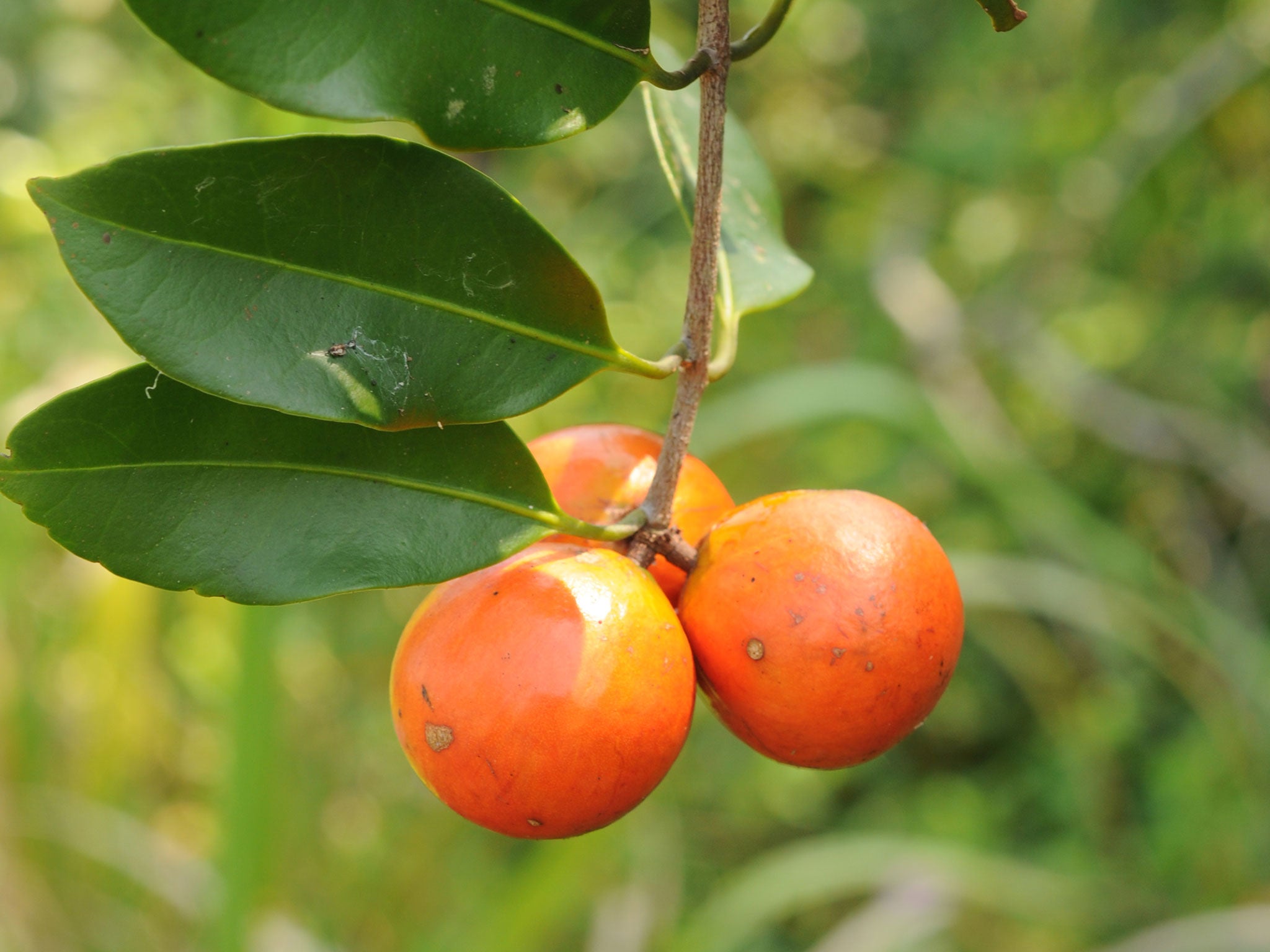Kew Gardens scientists discover ingenious new 'gobstopper' fruit tree
The scientists also discovered a giant bean tree and one of the 'most irritating' plants in the world among 70 new species unearthed this year

Your support helps us to tell the story
From reproductive rights to climate change to Big Tech, The Independent is on the ground when the story is developing. Whether it's investigating the financials of Elon Musk's pro-Trump PAC or producing our latest documentary, 'The A Word', which shines a light on the American women fighting for reproductive rights, we know how important it is to parse out the facts from the messaging.
At such a critical moment in US history, we need reporters on the ground. Your donation allows us to keep sending journalists to speak to both sides of the story.
The Independent is trusted by Americans across the entire political spectrum. And unlike many other quality news outlets, we choose not to lock Americans out of our reporting and analysis with paywalls. We believe quality journalism should be available to everyone, paid for by those who can afford it.
Your support makes all the difference.A “gobstopper tree” with fruit that takes so long for chimps to suck that they disperse the seeds across a large area is among 70 new species discovered around the world by Kew Gardens experts this year.
Chimps pluck the bright orange fruit of the Salacia arenicola from branches and can spend hours enjoying the sweet flesh before spitting out the seeds.
The plant was discovered in a coastal region of the Republic of Congo. Dr Martin Cheek, who jointly with colleague George Gosline described the new species, said the fruit appeared perfectly adapted to appeal to chimps.
He tasted the fruit himself, confident it would be edible. “I opened them up and had a go with them. I found they were cleverly designed so when you pop them in your mouth you get the flesh off and can keep on sucking for hours. They somehow keep all this juiciness going.
“They are set up so they will stay in the mouth for ages. By the time the chimp eventually spits out the seeds they have travelled a long way from the parent plant.”
“There’s a particular set of attributes in fruits that they [chimps] go for,” Dr Cheek added. “It’s almost as if these species were designed to be attractive to them. This one is large and orange and juicy and is like a giant, everlasting gobstopper.”
The species is a climbing shrub, or small tree, that can grow to 16 feet (5m) and is found in a sandy, coastal area within a reserve owned by the Jane Goodall Institute in the Republic of Congo. The fruit is the size of a small orange.
It has been classified as vulnerable, and there are fears habitat destruction caused by the oil industry and urbanisation could leave it on the brink of extinction.
Among the other discoveries by Kew scientists during 2014 was a new species of one of the “most irritating” type of plants in the world, a mucuna in Peru. Mucunas protect their seeds in pods which, when disturbed, release a clouds of thousands of tiny hairs onto unwary animals – or botanists. The hairs are highly irritating and those from some types of mucana have been used as an ingredient in itching powder.
“They go down the back of your neck, on your hands, under your fingertips. It’s really unpleasant. They are bad news, they are a pain,” said Dr Cheek.
The biggest discovery of the year was a 144ft-tall (44m) bean tree, Cryptosepalum korupense, which was found in the Korup forest in Cameroon. It took 10 years to identify as a new species because the researchers needed to wait until it came into flower before they could be certain about its identity. Just 28 of the trees are known to exist.
The Kew scientist with the most new species in 2014 was Dr William Baker who jointly identified 15 Calamus climbing palms from New Guinea and three new genera of betel nuts in Indonesia and the Raja Ampat islands.
Dr Cheek said: “Plants can have strikingly important uses and these new species might one day have important uses.”
Join our commenting forum
Join thought-provoking conversations, follow other Independent readers and see their replies
Comments